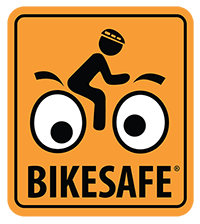Take action in your community.
There's no better place to start advocating for safer streets than with your neighbors in your very own community.
Community consensus helps overcome the ambiguity of many asks to local government, often necessary when requesting significant or unconventional changes to what planners and engineers call "the built environment."
Following are resources you can use to encourage your local leaders to prioritize children over cars.
Traffic calming for neighborhoods:
Older neighborhood streets were designed much narrower than today, encouraging slower car traffic. While many of these streets remain mostly unchanged, traffic volumes have increased since they were built, making them less conducive for kids to explore safely.
Modal filters - a type of street closure that allows bicycles and pedestrians through, but not cars - can significantly reduce the amount of unnecessary cut-through traffic on these streets, returning a neighborhood to being a safe and inviting place for families and young riders to enjoy.
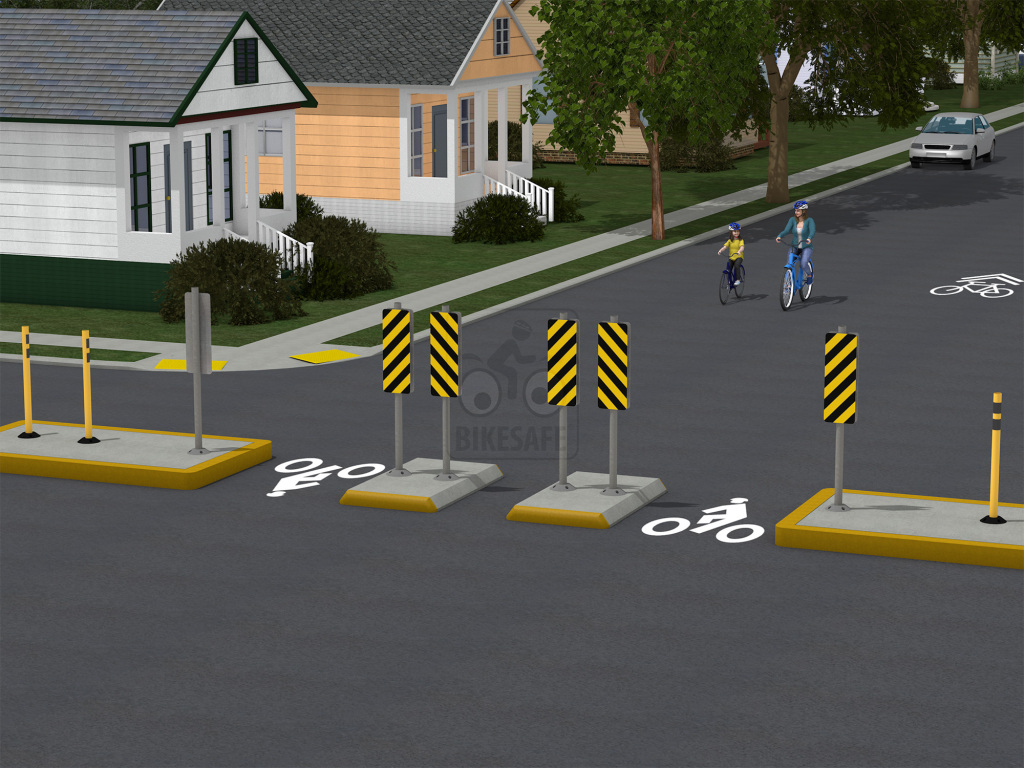
Protected bike lanes are the gold standard for rider safety - we have an entire page dedicated to the benefits and research supporting them and their multitude of benefits.
These create a dedicated lane for riders physically separated from automobile traffic, but parallel and connected in a manner to make riding a convenient option to get to places.
In neighborhoods, they are perfect for the larger roads that connect the neighborhood together - the wider ones that will always have higher traffic volumes and can accommodate a protected bike lane easily with modular concrete or Zicla dividers.
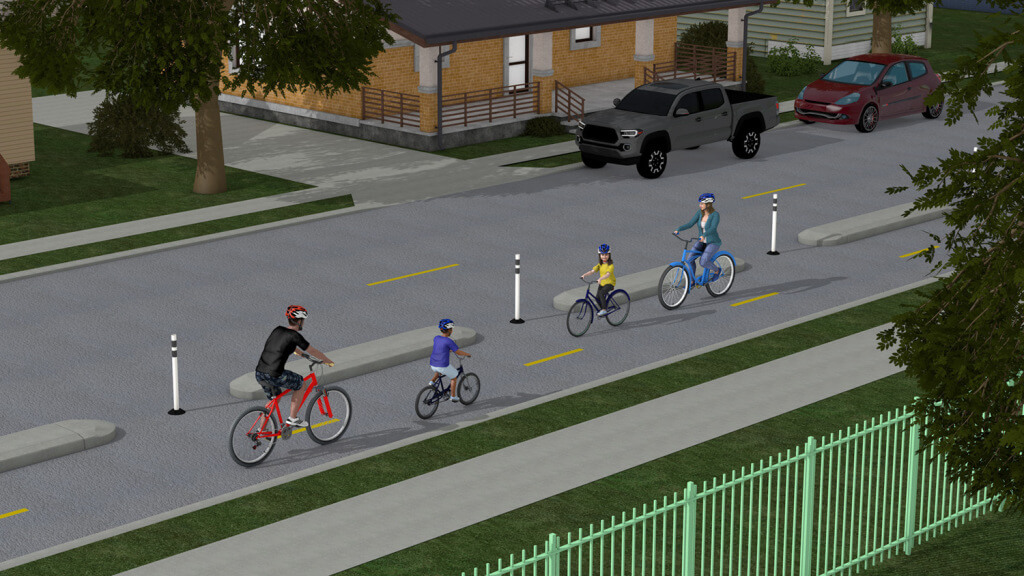
Speed tables - slightly flatter and longer versions of speed bumps - help keep drivers from speeding the entire way between stop signs or lights.
These tend to keep speed in check, but they do tend to manage speed only in the area immediately near the speed table; some drivers tend to accelerate after driving over them.
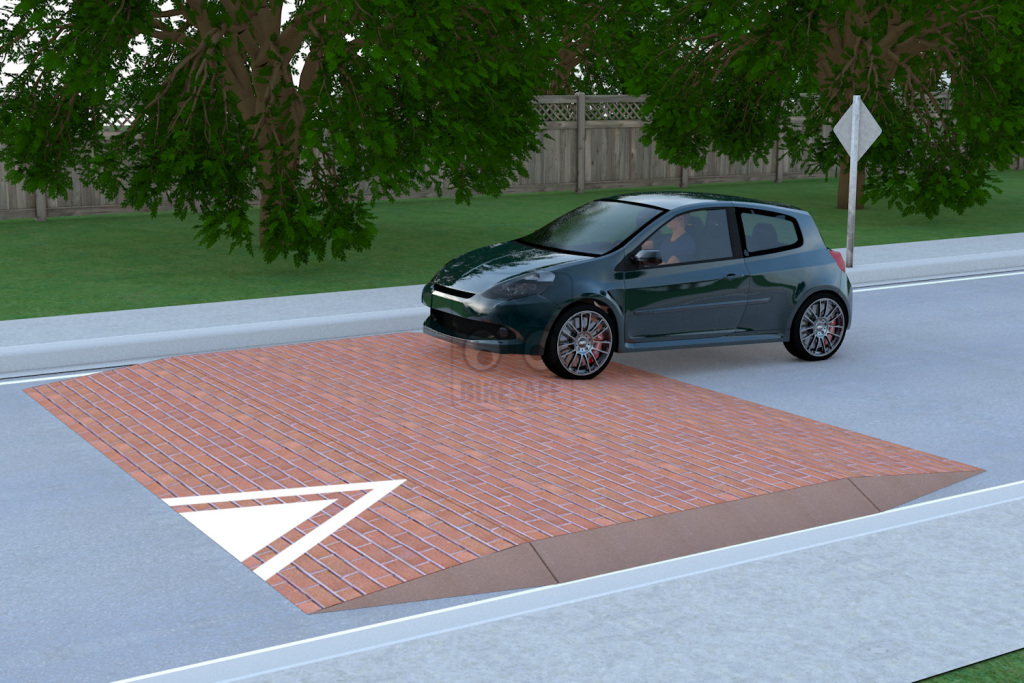
Raised crosswalks are a variation of the speed table.
In theory, they're essentially the same - they create a bump that drivers must slow down for - but raised crosswalks add this bump at a crosswalk or entire intersection. Instead of pedestrians dipping down to road height, drivers must slow down for pedestrians crossing at sidewalk height. This encourages drivers to slow down where people are most likely to cross the road.
This treatment isn't specifically intended to benefit riders, but - as with most forms of traffic calming - slowing traffic down for pedestrians generally benefits those riding bicycles.
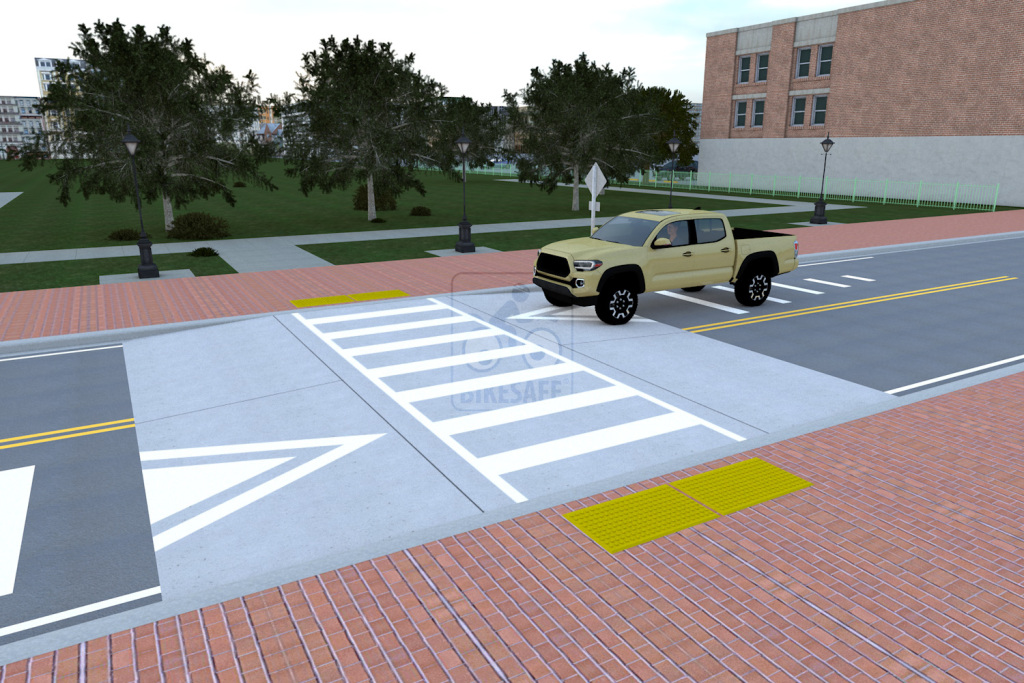
Municipal and County contacts:
Street engineering and maintenance in Miami is divided between the Florida Department of Transportation District 6 (FDOT District 6) and Miami-Dade County's Department of Transportation and Public Works (DTPW). Miami-Dade County maintains the majority of local roads, while FDOT has jurisdiction over some of the larger multi-lane arterials.
While Miami-Dade County oversees final roadway designs and, in some cases, maintenance for municipalities, each municipality has a staff of engineers and planners on hand. All municipal redesigns require approval through Miami-Dade DTPW.
If your neighborhood necessitates safer streets, one or more of these public works departments - and your area commissioner(s) - are where you should address your concerns. Always maintain a productive, respectful narrative if you want to see more efforts put towards safer streets. Certain engineering standards may currently limit what can be done, so be open to options made available to your community. Engineering guides like the Manual on Uniform Traffic Control Devices (MUTCD) or Florida Greenbook establish what can or cannot be built.
Use the list here to find your Public Works department. Keep in mind that requests through your local commissioner (or commissioners) tend to receive increased priority.
More Resources
Making neighborhoods better with protected bike lanes
BikeSafe
Designing for All Ages & Abilities
National Association of City Transportation Officials (NACTO)
Protected Bicycle Lane Analysis
NYC Department of Transportation, 2014
How To Make School Zones Safer with Protected Bike Lanes
Safe Kids Worldwide
In Austin, a Protected Bike Lane Built to Help Kids Get to School
Streetsblog USA
The Disappointing Distraction of “Vehicular Cycling”
Oh the Urbanity! (YouTube)
Tired of Cyclists Riding on the Sidewalk? Build More Bike Lanes
Bloomberg
Cyclists' Public Enemy Number One
Outside Online
